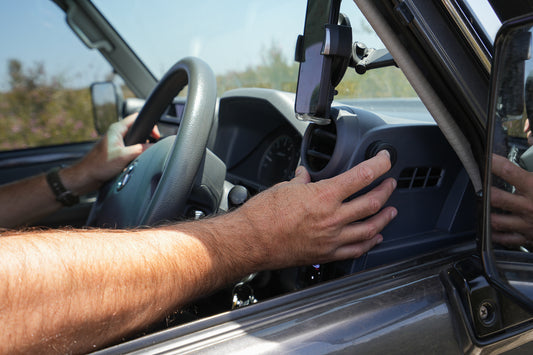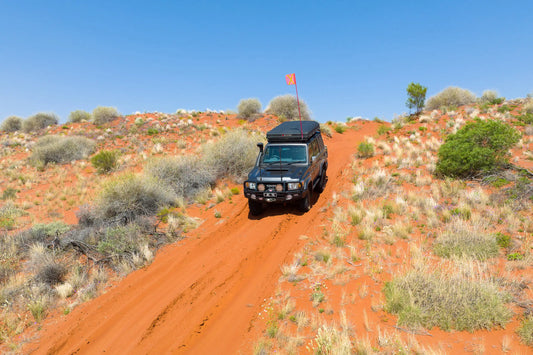I crawl out of my tent and walk up to a little knoll on the ridge for a moment of solitude before stepping into the mess tent to join my group, the thin air feels cold, dark shapes of centuries-old fir and hemlock trees loom out of the mist. It’s evening after a long day’s climb from the village below that sits at the end of the road from Kathmandu. Just a day into this twenty-two-day trek, the feeling is already remote.

I’m leading one of my regular exploratory treks for World Expeditions, this time planning to enter the Everest region from the south-west through a complex series of successively higher passes. The twelve who’ve signed up are an eclectic bunch ranging from a marketing executive and IT person in their late twenties, a teacher and a couple of tradies, some middle-aged entrepreneurs, public servants and a couple of self-funded retirees in their late sixties. Though all are healthy and fit, judging by today’s performance, some are much fitter than others but more importantly, they’ve all got a positive attitude and seem to be looking forward to the adventure as much as me! The good thing is all of them got to camp before the porters who are definitely the heavy lifters in this group. Without them, we wouldn’t even be starting and without us, they would not have had the opportunity to earn some much-needed cash to support their rural families or further their studies.

Since my first expedition in 1978, I’ve been a regular visitor to the Himalaya. Early on I realised I didn’t like trekking on the regular routes, even back then, in my opinion, they were crowded, dusty, lined with tea-houses and camping opportunities were dirty and grim. So ever since I’ve tried to go off the beaten trail where few or no trekkers or climbers have been to. In those forty odd years, I’ve reaped a rich trove of magical places unsullied by the inevitable consequences of mass-tourism. Some of the higher and wilder places never trodden before by humans. the woods uncut by steel, the herbage un-grazed by domestic flocks, the snow unsullied by human passage.
Given its proximity to the long-established traditional approach to Everest, I’m not expecting to be breaking any new ground on this trip but I’m pretty sure that outside visitors would scarcely have set foot anywhere up ahead.
Though I’ve got the assistance of dozens of locals in the form of camping crew – catering staff, Sherpa guides and porters, as always I’ve taken on the role of route finder. I do have a good ability to read the country and over the years I’ve learned how local shepherds and hunters have interacted with the precipitous landscape of the forests and high alpine grasslands to find practical routes around cliff, gorge and impenetrable scrub so I’m looking forward to deciphering the maze of trails ahead. Apart from that, having thought up the route, studied maps and satellite photos, I’m the only one with more than a vague idea of where we are generally heading!

By the third day, we have climbed up through the steep forested slopes and into the vast open terrain of the high foothills, this has made route-finding less complicated and flat campsites easier to come by. The scenery has been stupendous but the steepness of the terrain surprised me, the group’s tent-site finding skills (each are responsible for finding their own tent site) had to be fast-tracked with flat campsites hard to come by!

Revelling in a campsite flat enough to play volleyball on and sporting some boulders big enough to practice some fixed rope climbing and descending skills on, our recreation and training are brought to a close by an afternoon storm dumping nearly a foot of snow. It’s plenty enough to obscure any tenuous footpath and turn simple traverses into scary undertakings with serious consequences in the event of a slip.
And so the morning brings on a proper challenge and I find myself getting into the mind of a shepherd trying to route find into another valley. Mostly the route ahead seems plain enough. Plugging steps through fresh snow is hard in places but there are obvious ‘dots’ ahead that I can see to join, like a stone cairn marking a minor pass, clearings with old stone ruins of shepherd shelters, a seemingly random traversing white line across a patch of sub-alpine scrub on the steep slope far ahead. I’ve learned the hard way never to make assumptions about where a route might head because there are often hidden obstacles, cliffs mainly, on what might appear the logical way.
Up above the tree-line, when we do lose the trail, it quickly becomes obvious, unlike it would be were we down in the forest, where you could go quite far before realising you’ve taken the wrong track! After crossing a minor pass that gives us our first spectacular views of the giant peaks of the Rolwaling massif to the north, we continue ploughing a trench through the snow down into the next side valley where we stop at a grassy flat spot for lunch. Leaving the others to have a cooked lunch, taking cheese and biscuits, Temba one of our Sherpa staff and I head off to scout the trail ahead. The billowing clouds in the valley are welling up and before long they’ll be swirling around us to make route finding far more challenging. Along the way as well as leaving our footprints in the snow, we make sure to mark the route with stone cairns so that even if it snows, the others can follow. By mid-afternoon, I’m well pleased with our progress and as expected we end up in a high valley with a flat grassy floor providing the perfect place to camp.

Beyond the flat, the valley constricts to drop steeply to bigger drainage at right angles to the one we are in. It’s up that valley that our route ahead lies. I’m anxious to know how we can best get into the valley – as always I have to think of the porters and their unwieldy loads. There’s a vague track leading out from the flat and apparently traversing down into it. Leaving our packs behind, we follow it until it dissipates into many minor animal tracks and the slope steepens to near vertical. Clinging to juniper bushes growing from the rich dark earth between the rocks, feet slipping on tussocks, we turn and climb upwards in the hope of intersecting a path that we surmise must be there as a way out of the side valley. We scramble upwards, free soloing on sketchy rock and slippery vegetation, it’s no fall terrain. We are tired, the altitude is over 4000 metres and we’re not yet acclimatised. Its’ been a hard day but the exhilaration of exploration keeps us going. The mist has long since closed in and now it begins to snow. Gradually the steepness eases and we eventually strike a major trail snaking diagonally down from above. We follow, plodding upwards until it crosses a slot in the ridge marked with cairns. It then appears to drop into the upper part of the side valley where I’ve planned to camp. Following it down we sidle above some cliffs, there are a couple of steep, iced up gullies. I make a mental note that tomorrow we’ll have to cut steps and fix ropes here for the porters. The route is ingeniously intricate, going in almost every direction, steps have been built wherever livestock would find it insurmountable.
The afternoon weather builds into another full-on blizzard, the group struggles in and setting up camp in the wind and driving snow is epic. I declare tomorrow a rest day. We could all do with a day’s rest and acclimatisation because the going is only going to get harder as tomorrow I’m hoping to camp about eight hundred metres higher and the next day cross over a 5,300-metre pass.
The pass crossing provides another epic day. From our camp perched on a glacial terrace near the head of the valley with views stretching out over the foothills to the Gangetic plain beyond, the route winds up to a final icy snow slope that requires step cutting to a notch in the rocky ridge. Arriving there is a kind of transformational moment, especially for those in the group who have never been to the Himalaya before. The side we’ve come from is the normal comprehensible landscape of the plains rising to progressively taller and spectacular foothills. The scale is large but not unrealistically so. The other side, which is suddenly revealed as you reach the rocky ridge at the pass is shockingly, spectacularly another world!

It is all dazzlingly high, sparkling white, jagged peaks with fluted faces and tumbling seracs with the clear blue Tibetan sky as a back-drop. It’s incredibly beautiful and to the uninitiated eye, impassable. What is hidden are the glacier filled valleys that provide access, and it is the main one that we must somehow get to and travel up.
To begin there’s a steep drop down a slope heavily loaded with snow. We fix a rope anchoring it to a massive boulder. Gingerly I let myself down, stomping hard in the knee-deep snow as I go. After about ten metres there is a soft ‘whump’ and the slope cuts loose, I tighten my grip on my abseil rope as the top forty centimetres of snow rushes past gathering bulk and momentum until the avalanche rumbles down and out onto the snow-covered glacier below.
Deep snow over a rocky moraine of a glacier is the worst terrain in the world to break trail through. Unfortunately for us up front, this glacier has long sections that barely slope downhill and the going is exhausting and the heat of the high altitude sun bouncing off the snow unbearable. Some steps sink in only up to my knees, some up to my hips and occasionally, when inadvertently I find a gap between boulders, I drop down to shoulder level or more. Luckily reinforcement arrives in the shape of Temba and we plunge on.
Eventually, at the glaciers’ snout, we re-group. The slow progress of breaking trail was complimented by the slow progress of everyone having to descend the fixed ropes one at a time and each time someone descended the steps underfoot got slipperier. Once on the glacier, those behind had an easier run as the trench through the snow got more consolidated with each passage. The sun is dipping to the horizon and the temperature plummets accordingly. Everyone would like to make camp here but the snow is still deep and I’m worried about the cold combined with wet boots, socks and trousers and make the decision to keep going. Sliding and slipping it’s a marathon descent and darkness overtakes us two-thirds of the way down. All the way I’m second-guessing that decision to keep going but everyone is in good spirits and when we finally hit the level ground and dry grass and get a few cups of tea into us, it all feels worth it.

Some of the group don’t even make it to dinner but retire to the coziness of their tents. I declare a sleep-in until the sun hits camp. Sleep comes quickly.
At breakfast, everyone’s got a story to tell and bruises or grazes to show from tumbles on iced up rocks in the dark but nothing serious! I’m always amazed that given the ample potential for injury by slipping and falling the incidence of serious injury is very low on these treks.
Yesterday’s eighteen hours on the go has certainly earned us an easy day so we amble up the valley for two hours before making camp in the glacier’s ablation valley that sports a meandering stream of crystal clear water emanating from a spring. Ablation valleys, which often but not always form between the lateral moraine of a glacier and the valley side are a godsend to travel in the mountains because they offer a far easier passage than on the glaciers themselves which for much of their lower parts are always liberally covered in the random, jumbled rocky mess of moraine.

The route we are now on links the Rolwaling valley to the Everest region via the 5750 metre Tashi Lapcha pass. Sadly litter along the trail, especially at campsites makes it obvious that we are now on a regular trekking route, albeit one of the lesser used ones. The lack of awareness about littering is one I find challenging. I suppose people who litter are not aware that it is unsightly or that it signals a lack of appreciation that there’s a difference between a littered landscape and a pristine one and especially with plastic, that there are serious consequences of leaving it strewn about the landscape.
World Expeditions has since embraced an initiative called 10 Pieces were participants on the treks volunteer to pick up at least 10 Pieces of litter a day. At the end of the day, the combustible litter is efficiently and cleanly burned in a specially designed incinerator. This initiative has been enthusiastically embraced and is helping to change local people’s (who are by far the biggest source of litter on trails) attitudes to litter.
Our crossing of the Tashi Lapcha is the first big challenge of the trek, not because of the technical difficulty, it is just a hard walk up and down a glacier, but because of the significant altitude. That everyone copes well with it is a legacy of the fast-track acclimatisation achieved by the gradual but hard ascents put in earlier on the trek.
In addition, those first few days of the trip when everything and everyone was new but then almost without noticing it, everyone has gotten into the travel groove and rhythm. All the concerns about life in the city have fallen away and now everyone is in tune with trekking life. The real therapy and joy of a long journey through the mountains is finally being realised.

On our itinerary, there are two options to climb 6000-metre peaks and one of them is directly above the pass. However, knowing that we are all a little tired from the efforts of the last few days I need to decide if doing this one will jeopardise our chances of doing the second and more desirable peak. To help me with this, I get a weather report via satellite text from a friend back home. It yields some critical information; current fine conditions will deteriorate, within a day there’ll be strong winds then in a few days the winds will subside for a short period before resuming again. Having spent too many windy conditions up high I know enough to avoid them if at all possible. A strong, cold wind is dangerous in an insidious way. It wears you down and distracts you before you are aware of any effect beyond feeling cold, then you start making simple mistakes that can lead to danger on steep terrain.
So I cancel the first climb and after a chilly but spectacular night just below the pass we make the long descent to the Sherpa village of Thame, our first village since the start of the trek! We camp on the closely cropped greensward of a yak pasture owned by a trekkers lodge which offers mod cons such as hydroelectric powered hot showers, WiFi, cans of cola and beer. After nearly two weeks in the wild, the culture shock is palpable and although elements of it are welcome, I think everyone is relieved to move on again and leave the main tourist trail behind to once more walk the less travelled path.
The next climbing objective is a 6186m peak called Kyajo Ri one of the lesser-known but more spectacular of the so-called trekking peaks that climbers are permitted to climb at a reduced fee compared to the generally higher expedition peaks. It lies at the head of a small, glaciated hanging valley virtually hidden away from view just to the north-west of Namche Bazaar. The approach to the base camp could be considered a tough trek, with three steep and rocky steps to negotiate but are now hardened team cruises it without drama, though the snow from the previous week’s storms makes for tiring trail breaking. Leaving the group to amble up to a high camp, the climbing sherpas and I make an alpine start in the dark and climb ahead to scope out the route and fix a line to the summit.
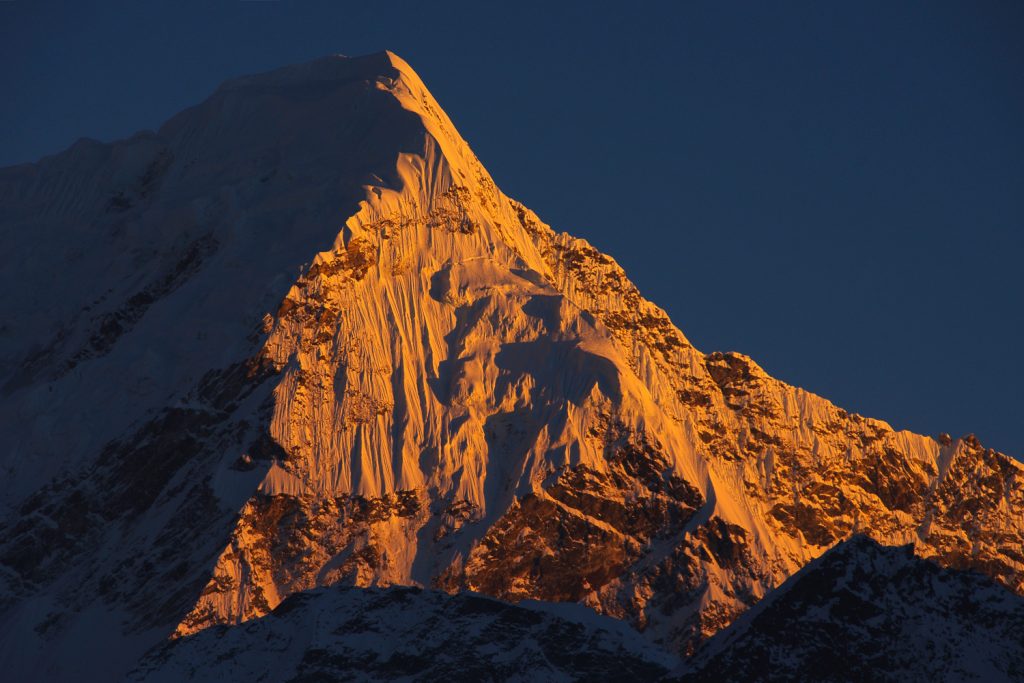
The route looks a little intimidating for beginners because it is consistently moderately steep with small sections of rock and longer sections of ice and slightly softer snow. But once the rope is in place, the greater sense of security it will give should help them overcome the considerable exposure. The wind is still causing me to keep all my clothes on despite working hard, hopefully, the forecast is accurate and tomorrow is calmer.
To have tea and snacks proffered almost before we wearily take our packs off is incredibly comforting! It’s been a long and strenuous day and tomorrow we must go back up with the added responsibility of making sure everyone is safe. Three of the group have elected to stay at Base Camp because they were not feeling up to the climb but everyone else has arrived in good spirits. As the light dies, the hard-working kitchen crew serve us dinner in our tents and we turn in for an early night in preparation for another alpine start. It’s always dreaded but quickly redeemed once fully dressed and on the go under a starlit sky. The stars are dazzling when the ever-on-the-job kitchen crew wake us with hot tea.

Overnight the wind has dropped on cue and so has the temperature, it’s below -20 degrees!! But plummeting temperatures are to be expected, it’s the autumn trade-off as the skies clear and hopefully, afternoon storms become less frequent.
As we climb higher the light seeps upwards from the eastern horizon and the view keeps opening up to reveal what truly is one of the great wonders, dawn on the roof of the world. Peak after peak lights up with a pink glow, which turns to amber, fades to yellow and finally full daylight. With no wind, the sunlight’s warmth is instantly comforting. I know enough about high altitude sun to make me very glad I’m high on a mountain rather than on the snow-covered glacier in the valley below that will soon be turning into a reflective oven. And even up here where air movement moderates the heat, I’m careful to cover up to escape being viciously sunburned. Even here there’s less than half of the earth’s atmosphere above us (in terms of density) so solar radiation is far less filtered up here and even this early sun feels warm on the exposed parts of my face.
Apart from the view, I think the most distinguishing experience of being on a real mountain is the amount of air below. The valley floor, when you can see it, always seems improbably far below and everything appears in miniature. If you’ve ever been on top or near the top of a city skyscraper (like the Empire State) you will know the feeling but on a mountain, it’s that much more real and impressive because of the larger scale, the natural setting and not least the effort to get there! The city is more or less a known quantity and predictable. Most of the time a mountain isn’t like that, there’s always a large element of the unknown and unpredictable that adds to the sense of exploration and excitement bordering on unease about what could happen.
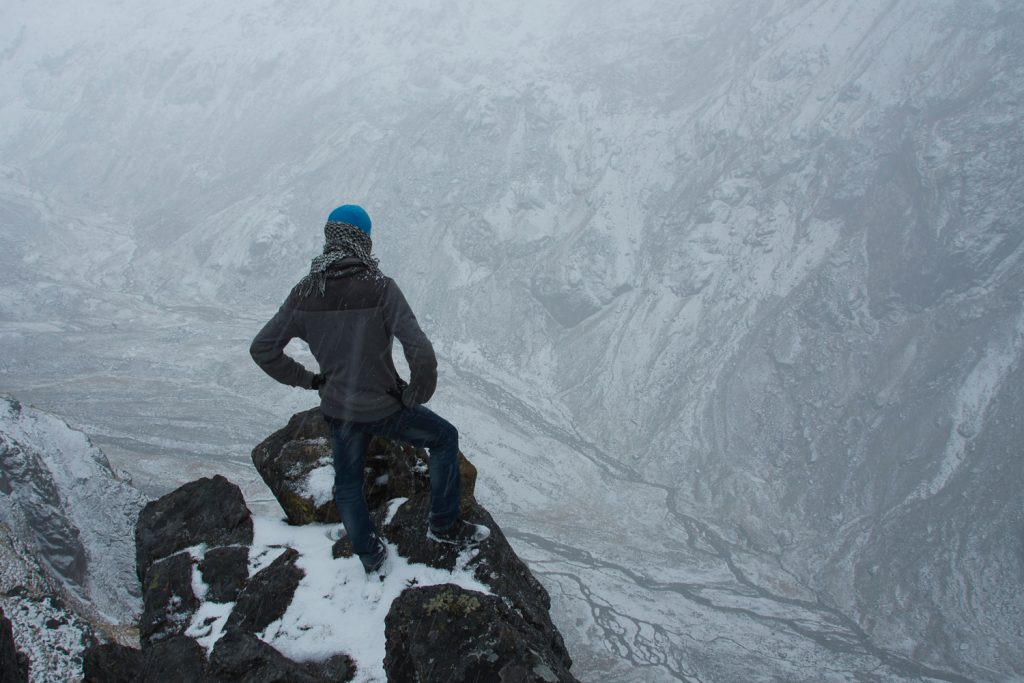
Hopefully, with us guides having fixed a rope to the top yesterday for them to climb up using a mechanical ascender for assistance and safety, my group are able to enjoy the climb.
By late morning all of us are assembling on the summit for the customary summit photo – luckily we all fit!
Of course, they are all stoked to have accomplished the arduous mission and in such immaculate conditions. After snacks and an almost tedious number of poses for photos, I caution everyone about the dangers of descending and the strict need for vigilance, to keep connected to the rope and to avoid catching their crampon tips on a trouser leg, one by one the descent begins. I come last untying the ropes and where safe dropping them so one of the guides positioned below can start coiling them while I remove the snow stake or ice screw anchors, then down-climb to the next ones. Methodically we make our way down until finally, we are all safely back in camp for the long-anticipated cups of tea, a quick pack up and a weary descent to Base Camp.
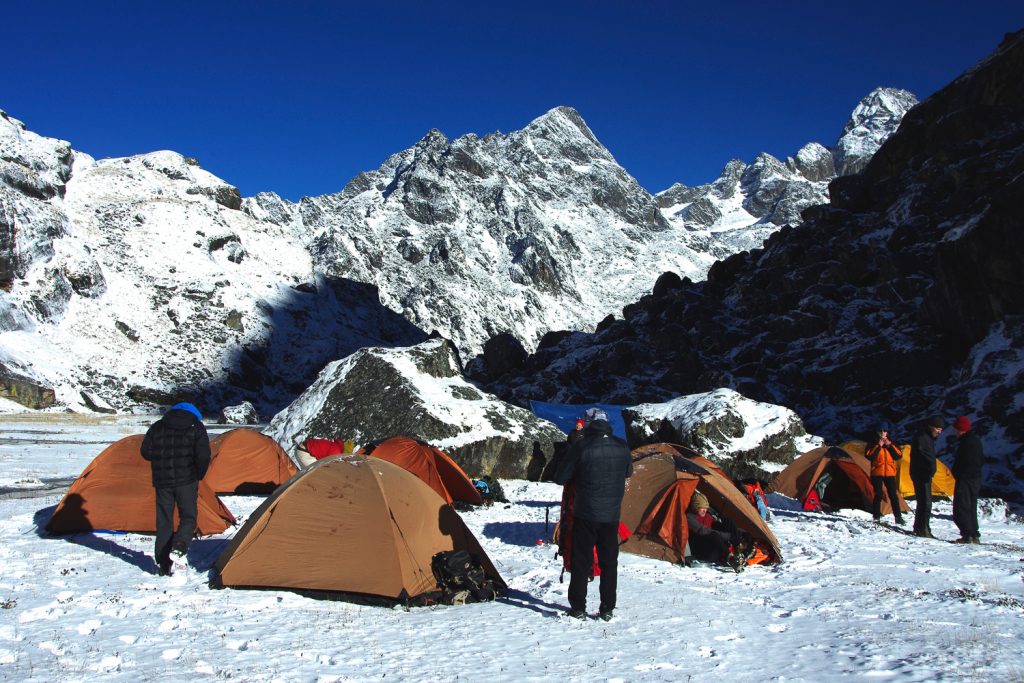
It’s a great luxury when trekking up high to stay in bed until the sun warms your tent, thankfully this morning we can afford to do that. Though the sky has stayed clear, on the mountain we can see great plumes of snow whipping off the summit area. The winds have returned and I feel very thankful for modern weather forecasting and communications!
It’s a happy, relaxed and weather-beaten group at breakfast. Those who accomplished it leave no doubt that it was a tough undertaking, reassuring those who opted out of the final climb that they made the right call. The last hurdle of the trek has been crossed. From here it’s all downhill.

At the end of the day, we drop into the bustle of Namche Bazaar. The culture shock is disorienting, almost dizzy-making which two bottles of celebratory beer do nothing to control, you just roll with it and accept the hot showers and other little luxuries. There’s a tinge of sadness that, tough as it has been at times, it’s all about to come to an end but the overarching feeling, stronger than ever, is how wonderful it is to be alive!
Founder of Adventure Curated, Mike has spent his life outdoors. He has represented Australia as a slalom kayaker, guided whitewater expeditions in Nepal, and taught outdoor education and wilderness medicine. He’s paddled the Kimberley’s Fitzroy River in the wet season, across the Bass Strait and has explored many of Australia’s remote areas by 4x4.







